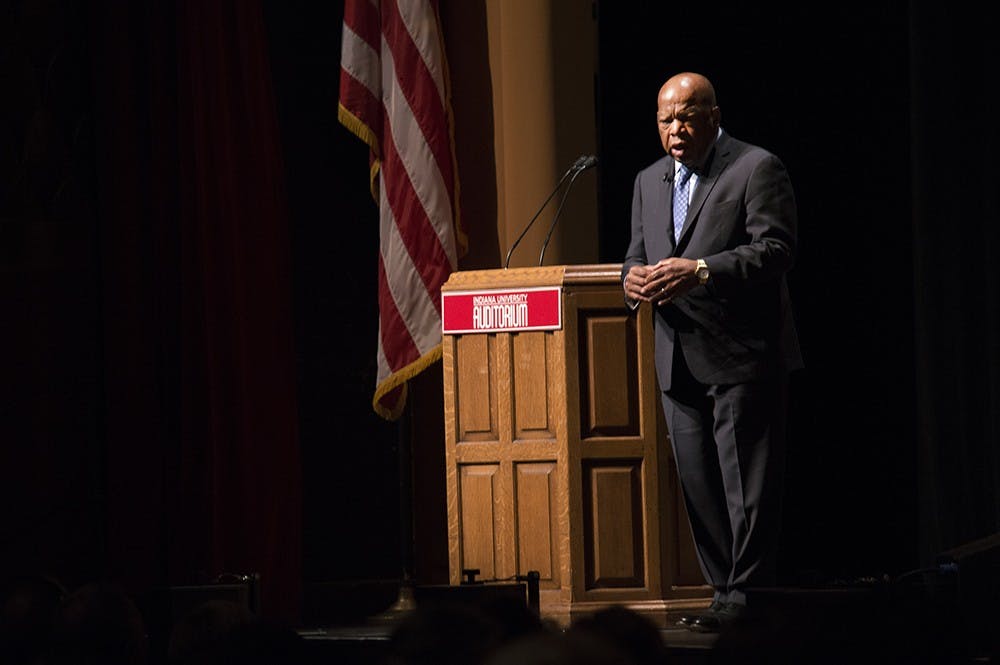In the historical graphic novel series, “MARCH,” the battle between good and evil is fought between real-life heroes and villains.
A civil rights icon, a politician and an artist teamed up to bring the civil rights era back to life.
U.S. Rep. John Lewis, D-5th District, spoke with students and faculty about his graphic novel.
The autobiographical series chronicles the trials and tribulations Lewis experienced throughout his nonviolent fight for the advancement of civil and human rights.
The event was part of “The Power of Words: Changing Our World — One Author at a Time”, a biannual speaker series sponsored by the Monroe County Public Library and The Friends of the Library.
Matthew Mervis, the current topics director of Union Board, evaluated the program and helped organize the event.
“The Union Board aims to meet college student needs and help them understand what Congressman Lewis went through,” Mervis said. “We thought it would be a great event for students to come learn about the graphic novels and civil rights movement as well.”
Following a brief introduction from the Director of the Center on Congress at IU, U.S. Rep. Lee H. Hamilton, D-9th District, Lewis started by telling the audience about his early childhood and his immersion into the world of civil rights activism.
“In 1955, 15 years old, in the 10th grade, I heard of Rosa Parks, heard the words of Martin Luther King Jr.,” Lewis said. “The actions of Rosa Parks, the words and leadership of Dr. Martin Luther King Jr. inspired me to find a way to get in the way.”
Lewis is one of the original 13 Freedom Riders and the sole surviving member of the “Big Six,” a coalition of civil rights leaders that included Martin Luther King Jr.
Lewis was accompanied by his co-authors, Andrew Aydin and Nate Powell, who spoke as well.
Aydin, an American politician, award-winning comic writer and digital director and policy advisor to Lewis, spoke after Lewis.
Aydin said much of the content surrounding the civil rights era is a diluted version of what truly took place during that time, which is why Lewis’ story is important.
“We’re not watering it down,” Aydin said. “We’re showing you what John Lewis and other young people did, and what the young people of this generation are capable of doing.”
Nate Powell, a New York Times best selling author, award-winning artist and Bloomington resident, spoke after Aydin.
Powell said the drawing table can become very emotional, particularly when tasked with bringing to life the many brutal and intense sequences of inhumanity and violence that took place during the civil rights era.
“There is a constant sense of reckoning with the present, an awareness of how these are really just slivers of time separating our eras, a mindfulness of the world my kids will grow into,” Powell said.
Although America is a vastly different place than it was in the civil rights era, all of the authors agreed the fight is not yet over, and today’s youth can be the heros of the next chapter in America’s society.
“We hope that these books will inspire another generation of young people, and people who are not so young, to stand up, speak up, speak out and find a way to get in the way,” Lewis said.






